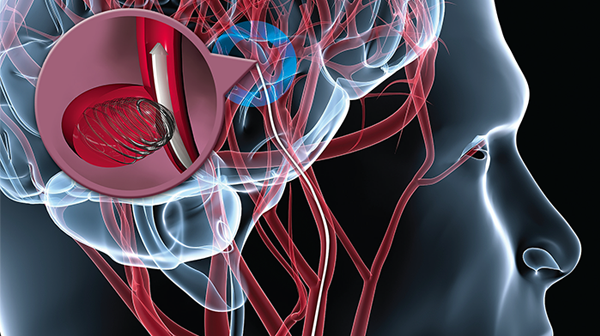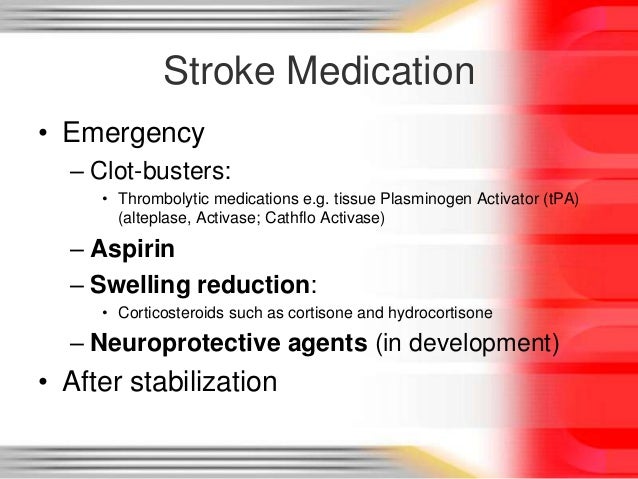Accessibility Statement

This image shows how applying clot-dissolving drugs like tPA directly to a blockage (intra-arterial thrombolytic therapy) or removing the clot with a special device can restore blood flow to the brain. If you get to the hospital within 3 hours of the first symptoms of an ischemic stroke, you may get a type of medicine called a thrombolytic (a “clot-busting” drug) to break up blood clots. Tissue plasminogen activator (tPA) is a thrombolytic. TPA improves the chances of recovering from a stroke. Tissue plasminogen activator (tPA) is one of the main drugs used to dissolve clots. It is made naturally by the body, but unfortunately, when a clot suddenly blocks an artery, the body doesn’t make enough tPA to dissolve the clot. TPA is a thrombolytic or a “Clot Buster” drug. This clot buster is used to break-up the clot that is causing a blockage or disruption in the flow of blood to the brain.
We are committed to providing a website that is accessible to the widest possible audience. To do so, we are actively working with consultants to update the website by increasing its accessibility and usability by persons who use assistive technologiessuch as automated tools, keyboard-only navigation, and screen readers.
We are working to have the website conform to the relevant standards of the Section 508 Web Accessibility Standards developed by the United States Access Board, aswell as the World Wide Web Consortium's (W3C) Web Content Accessibility Guidelines 2.1. These standards and guidelines explain how to make web content more accessible for people with disabilities. We believe that conformance with these standards andguidelines will help make the website more user friendly for all people.
Our efforts are ongoing. While we strive to have the website adhere to these guidelines and standards, it is not always possible to do so in all areas of the website.If, at any time, you have specific questions or concerns about the accessibility of any particular webpage, please contact WebsiteAccess@tenethealth.com so that we may be of assistance.
Thankyou. We hope you enjoy using our website.
Tpa Clot Treatment Icd 10 Code
What is a Stroke?
A stroke is an injury to a part of the brain. It happens when something goes wrong with the blood flow to the brain. Blood vessels, called arteries, carry blood and nutrients through the body. One way the brain may be injured is when an artery to the brain becomes blocked and the blood supply is cut off. Without a supply of blood, the brain does not get the oxygen and nutrients it needs. Permanent damage will result if the blood supply is cut off for more than a few hours.
If you or your family member has suffered a stroke within the last four hours, you may be offered a treatment called TPA (recombinant tissue plasminogen activator).
What is TPA?
TPA is a thrombolytic or a “Clot Buster” drug. This clot buster is used to break-up the clot that is causing a blockage or disruption in the flow of blood to the brain and helps restore the blood flow to the area of the brain. It is given by intravenous (IV), not by mouth.
What tests are required?
In order to determine whether you or your family member can be offered TPA, a CAT scan (an x-ray) of the brain will be done as quickly as possible. This is to find out if the stroke is the type that might be helped by TPA. If bleeding into the brain has caused the stroke, TPA can increase the bleeding into the brain. If this is the case, you will not be able to receive TPA. A blood test will also be taken to check that you do not have a bleeding condition.
If the CAT scan shows no bleeding in the brain then we can use the clot-dissolving drug TPA as long as certain conditions are met. The doctor will go over this with you.
What are the benefits of TPA?
Tpa Clot Treatment Definition
Treatment with TPA results in 1 out of every 10 patients treated being cured. Additionally, there may be an improvement in recovery for those that are not completely cured. TPA must be given within four and a half hours of the onset of the stroke to have this benefit.
What are the risks of TPA?
TPA treatment has risks. There is approximately a 3% chance of symptomatic bleeding (symptomotic hemorrhage) into the brain (because TPA thins the blood) compared to 0.2% if TPA is not given.

Tpa Clot Busting Drug

If bleeding into the brain happens after TPA is given, it may cause your stroke symptoms to be worse and may result in death. However, the death rate is the same with or without TPA and there is still a greater chance of recovery with TPA treatment. TPA may also cause bleeding in other areas of the body.
The best chance of a full recovery from a stroke caused by a blocked artery is with the use of TPA. If you choose not to have TPA treatment your care will not be affected. You will receive the usual treatment for stroke. This will be explained to you by your physician.
Tpa Clot Treatment Meaning
If you have any questions about TPA or other treatment for stroke, please talk to your physician or any member of your health care team.